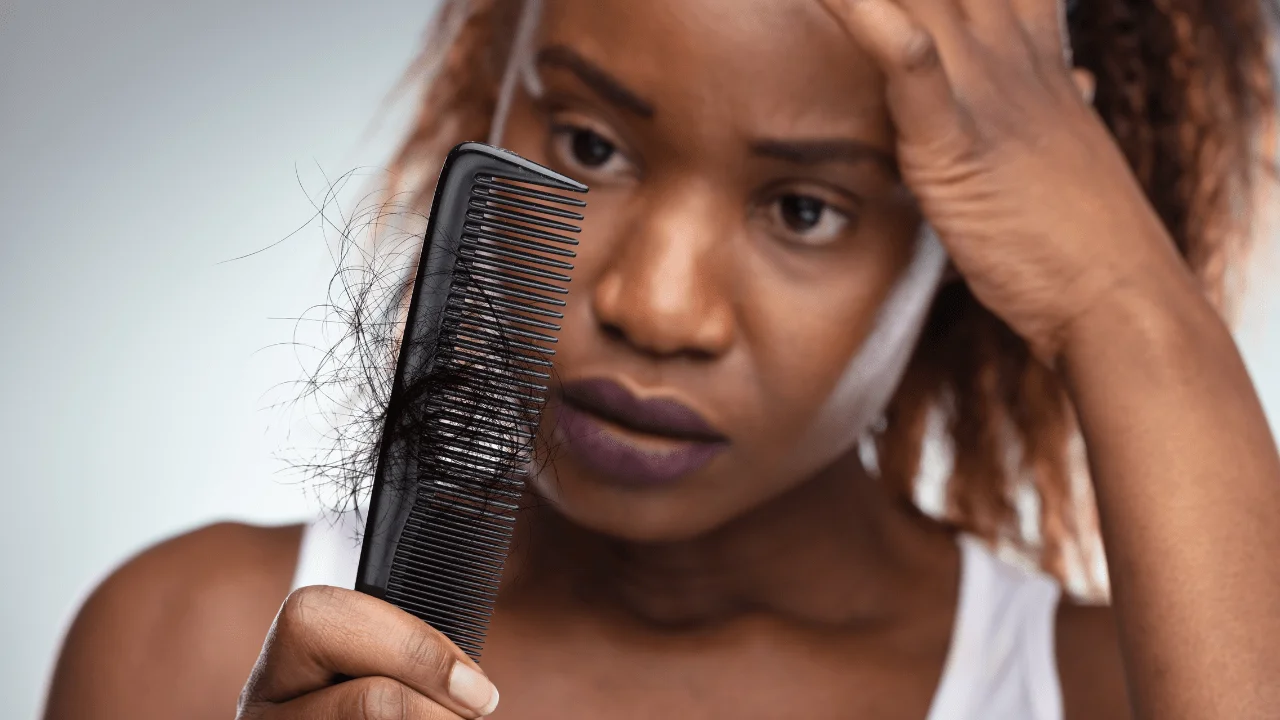
Postpartum hair loss is perfectly normal. It usually starts within five months of giving birth and starts slowing down about three months or so after that. There’s nothing you can do to stop the process, but being gentle with your hair and experimenting with hair products and styles can help get you through it.
IN THIS ARTICLE
- Is it normal to start losing your hair after giving birth?
- How long does postpartum hair loss last?
- What can I do about postpartum hair loss?
- What else can I do to keep my hair as healthy as possible?
- What if my hair loss continues?
Is it normal to start losing your hair after giving birth?
Yes. Many new moms are surprised to be shedding more hair than usual in the first few months after giving birth, but it’s perfectly normal. Doctors call it postpartum telogen effluvium.
Normally between 85 and 95 percent of the hair on your head is actively growing, while the other 5 to 15 percent is in a resting stage. After the resting period, this hair falls out – often while you’re brushing or shampooing it – and is replaced by new growth. The average woman sheds about 100 hairs a day.
During pregnancy, an elevated estrogen level prolongs the growing stage. There are fewer hairs in the resting stage and fewer falling out each day, so you may have thicker, more luxuriant tresses.
After you give birth, however, your estrogen level plummets, and a lot more hair follicles enter the resting stage and begin shedding three to five months later. So within five months, it’s likely you’ll have more hair coming out in the shower or on your brush.
Not all women notice dramatic changes in their hair during the postpartum period. Hair loss tends to be more obvious among women with longer hair.
It’s worth talking with your healthcare provider about your hair loss if you think it’s excessive. Hair loss can be a symptom of anemia or postpartum thyroiditis, which are treatable conditions.
How long does postpartum hair loss last?
No need to panic! Once the shedding starts, the hair loss usually lasts about three months and should slow down after that time. By your baby’s first birthday you should have noticeable improvement. By around 15 months, your hair should have grown in again. However, some women find their hair doesn’t have quite the density it had before pregnancy.
What can I do about postpartum hair loss?
You won’t be able to prevent the hair from falling out, but you can try to make the most of what you have. Here’s what dermatologists recommend:
- Try a “volumizing shampoo.” These products often contain ingredients like protein that coat the hair, adding to its full appearance.
- Avoid “conditioning shampoos.” The heavy ingredients in these products can make the hair look limp by weighing it down.
- Avoid “intensive conditioners.” These also contain heavy ingredients that pull the hair down.
- Use a conditioner made for fine hair. These contain lighter ingredients that won’t weigh down hair.
- Experiment with hair styles that mask the thinner sections of hair. Enlist the help of a hairdresser. (Just be sure to avoid styles that add tension to the scalp, such as a tight ponytail.)
If you’re tired of scooping hair out of the shower drain or sweeping strands off the bathroom floor, you may want to opt for a short cut. Plus, a short, wash-and-go hairstyle can be easier to manage when you have a new baby in the house and you’re strapped for time.
Note: If you have long hair, strands of it can end up tightly wrapped around your baby’s tiny appendages, including his fingers, toes, wrists, ankles, and penis. This is called a hair tourniquet, and it can be quite painful for your little one. If he’s ever crying for no apparent reason, check carefully for tight bands of hair. Rest assured that this is rare.
What else can I do to keep my hair as healthy as possible?
While these measures won’t keep you from shedding so much hair, they may help you avoid making matters worse. Take care of your hair by:
- Eating a well-balanced diet. The studies are conflicting, but there’s some evidence that low vitamin D and possibly other nutrients may contribute to hair loss.
- Being gentle with your hair. Avoid heat (from blow dryers and flat irons) and chemicals (from hair dyes and straightening treatments, for example), and hairstyles that put tension on your scalp (such as tight braids). And don’t brush or comb your hair too aggressively.
What if my hair loss continues?
If you’re experiencing chronic hair loss for six months or longer, talk with your doctor or dermatologist to investigate other causes, such as a protein or nutrient deficiency or a thyroid disorder.
Read more about


Add a Comment